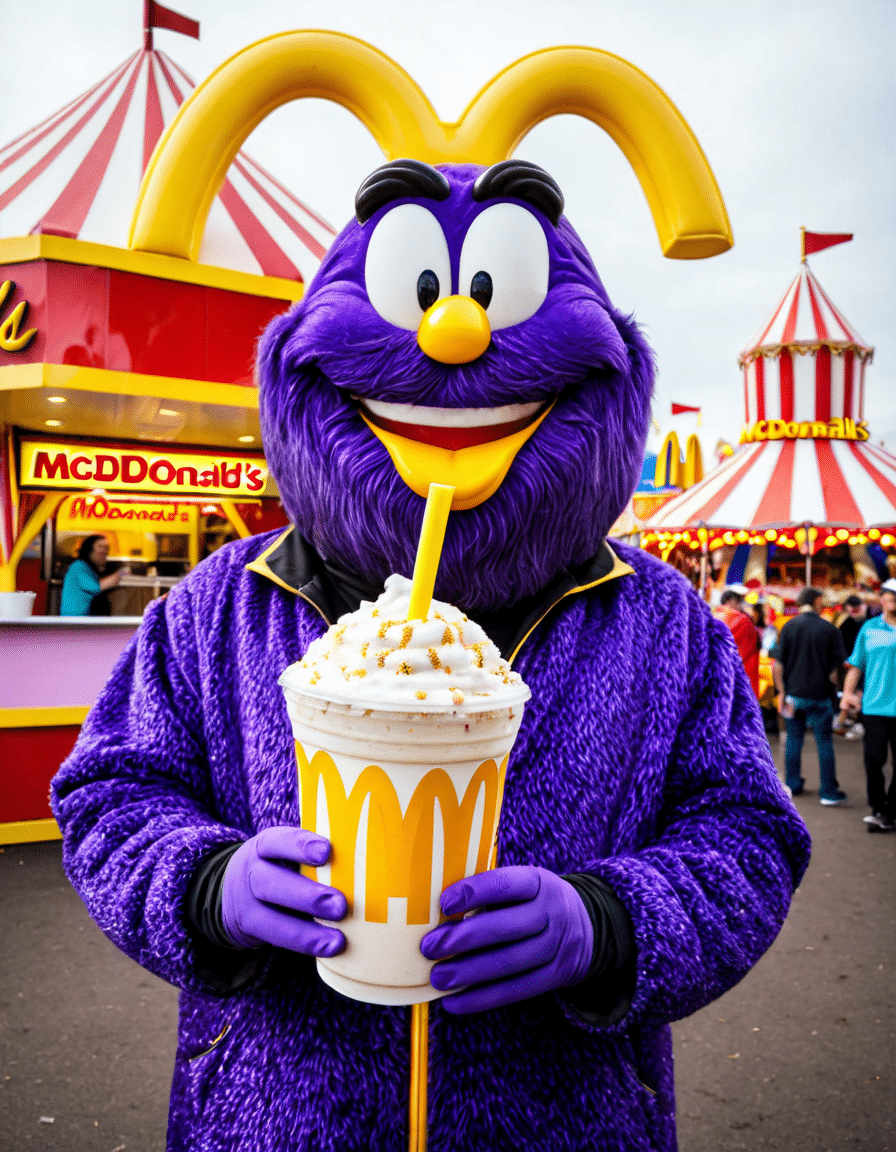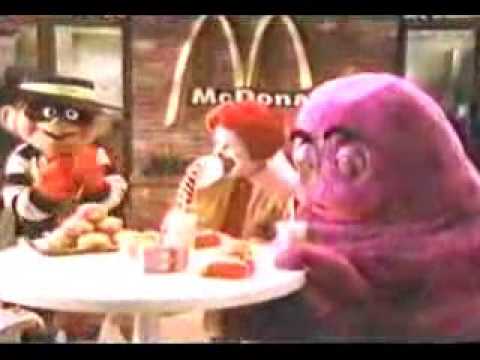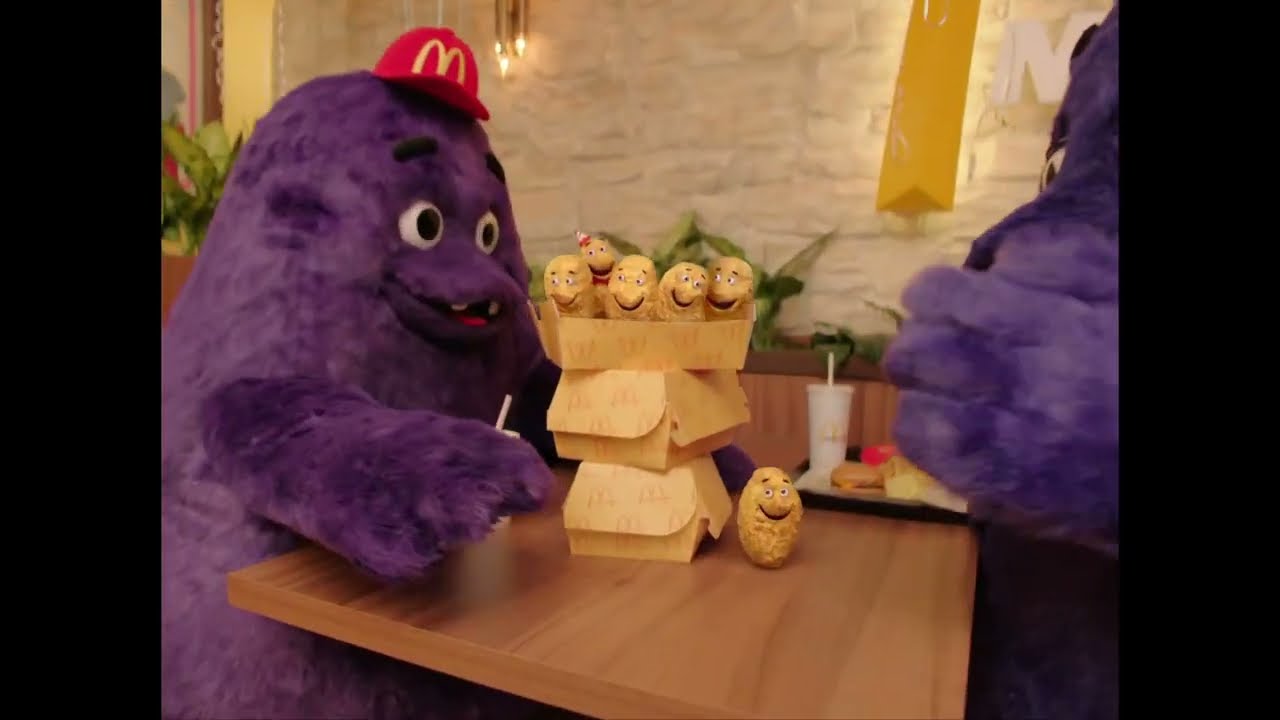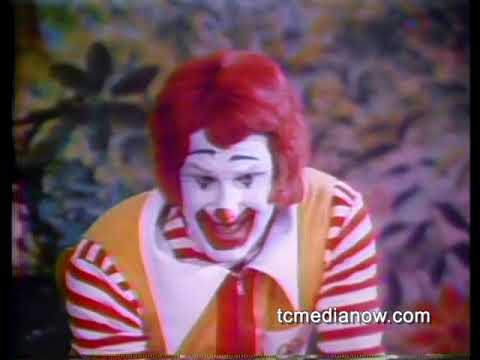Grimace McDonald’s has become a cultural touchstone that transcends the fast-food landscape. Since he first graced our screens in the early 1970s, this lovable, bulbous purple character has evolved from a milkshake-stealing villain to an enduring symbol of joy, nostalgia, and community. Whether you’re a fan of Grimace’s playful antics or just someone looking for a slice of childhood, his journey reflects broader trends in branding and consumer sentiment. So, let’s dive deep into what makes Grimace McDonald’s a standout figure in both pop culture and the fast-food industry.
The Evolution of Grimace McDonald’s: A Cultural Phenomenon
Initially introduced as the “Evil Grimace,” Grimace had nefarious plans to pilfer delicious shakes. However, by the mid-1970s, he transformed into a well-meaning, simple-minded companion of Ronald McDonald. This shift mirrored the era’s evolving consumer preferences, favoring characters that spread positivity and warmth. Brands in various sectors, from Coca-Cola to Disney, have demonstrated the power of character evolution in aligning with consumer values, but few have done it as seamlessly as Grimace.
As society gravitated towards more inclusive and friendly narratives, Grimace embraced this ethos. He embodies wholesomeness in a world often shifting toward cynicism. His adventures with Ronald McDonald and the gang made him relatable to families and kids alike, fortifying his status within McDonald’s marketing strategies. The overarching story of Grimace is a testament to a brand’s ability to adapt and grow alongside its audience—something worth noting for all creatives out there.
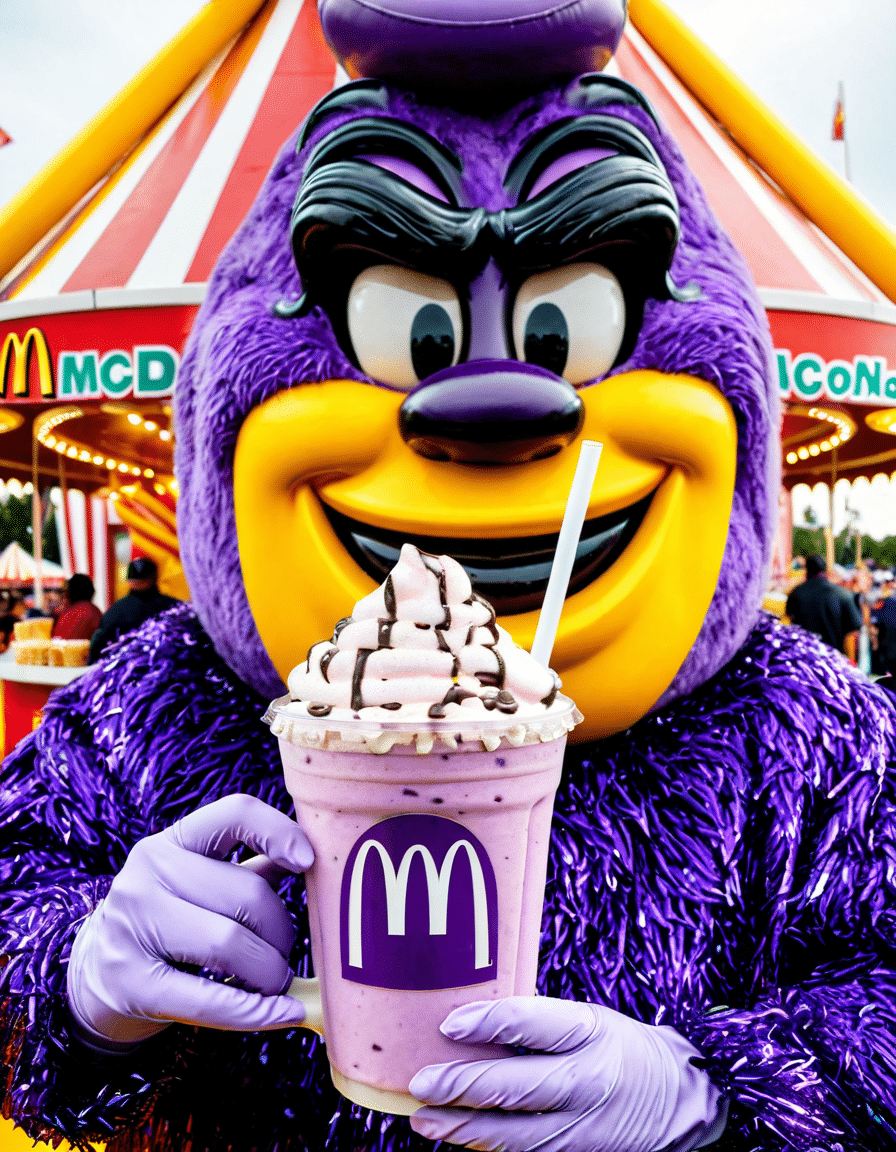
Top 5 Things That Make Grimace McDonald’s an Unforgettable Character
1. Unique Design and Visual Appeal
Grimace’s plump, purple form instantly captures attention. The bright color scheme and playful contours serve not only to attract kids but also solidify his role as an essential brand mascot. Unlike competitors, whose mascots might fade into the background, Grimace stands tall and proud, delivering a sense of familiarity and warmth.
2. Appeal to Nostalgia
Think back to your childhood trips to McDonald’s: the golden arches glowing bright, the smell of fries wafting through the air. For many millennials and Gen Z folks, Grimace evokes those fond memories of family bonding over Happy Meals. This emotional connection reinforces why we keep coming back to our favorite fast food, much like the stirring themes we find in cult classics like “The Breakfast Club.” Brands like Ben & Jerry’s also tap into this nostalgia, allowing memories to become a powerful part of their identity.
3. Merchandising and Marketing Strategies
Over the years, you’ve probably seen Grimace featured in various commercials and advertisements. From plush toys to limited-edition figurines, his presence drives sales and consumer interest. McDonald’s employs these character-driven marketing tactics as effectively as brands like Lego, whose mini-figures transform into collector’s items. These strategies not only boost engagement but also create a sense of community among loyal customers.
4. Role in Digital Culture
With the rise of social media, Grimace has found a new life online. Viral moments, like the “Grimace’s Birthday” meme, showcase his humorous and quirky personality, making him a favorite among meme-makers. This trend mirrors how Wendy’s carved out a unique voice on Twitter, proving that engaging with fans online creates lasting connections. It’s all about making the character relatable and shareable, which solidifies their place in contemporary culture.
5. Community and Charity Involvement
Grimace’s involvement in community initiatives, particularly through Ronald McDonald House Charities, speaks volumes about the character’s heart. By partnering with charitable causes, he bridges the gap between commerce and philanthropy, fostering a sense of trust and loyalty among consumers who value social responsibility. Much like how Ben & Jerry’s promotes social justice, McDonald’s shines a light on community values, enhancing its brand image.
Grimace McDonald’s in Popular Media: Appearances and Impact
Grimace has not merely twirled on the screen in commercials; he has also made waves across various media platforms. For example, his role in “The Wacky Adventures of Ronald McDonald” introduced him to new audiences. Similar to how brands like Pizza Hut have utilized animated characters in their marketing, McDonald’s cleverly capitalizes on storytelling to enhance its family-friendly reputation. This technique not only builds brand loyalty but also deepens consumer engagement.
As animated series and video games started appearing seemingly everywhere, Grimace became part of a bigger narrative. His journey reflects the broader evolution of mascots in popular culture. Just think of the cast of “Yellowstone,” who, like Grimace, have their own stories to tell, showcasing how character backgrounds can profoundly resonate with audiences. Ultimately, these appearances emphasize the symbiotic relationship between live and animated characters, compelling fans to bond over shared experiences.
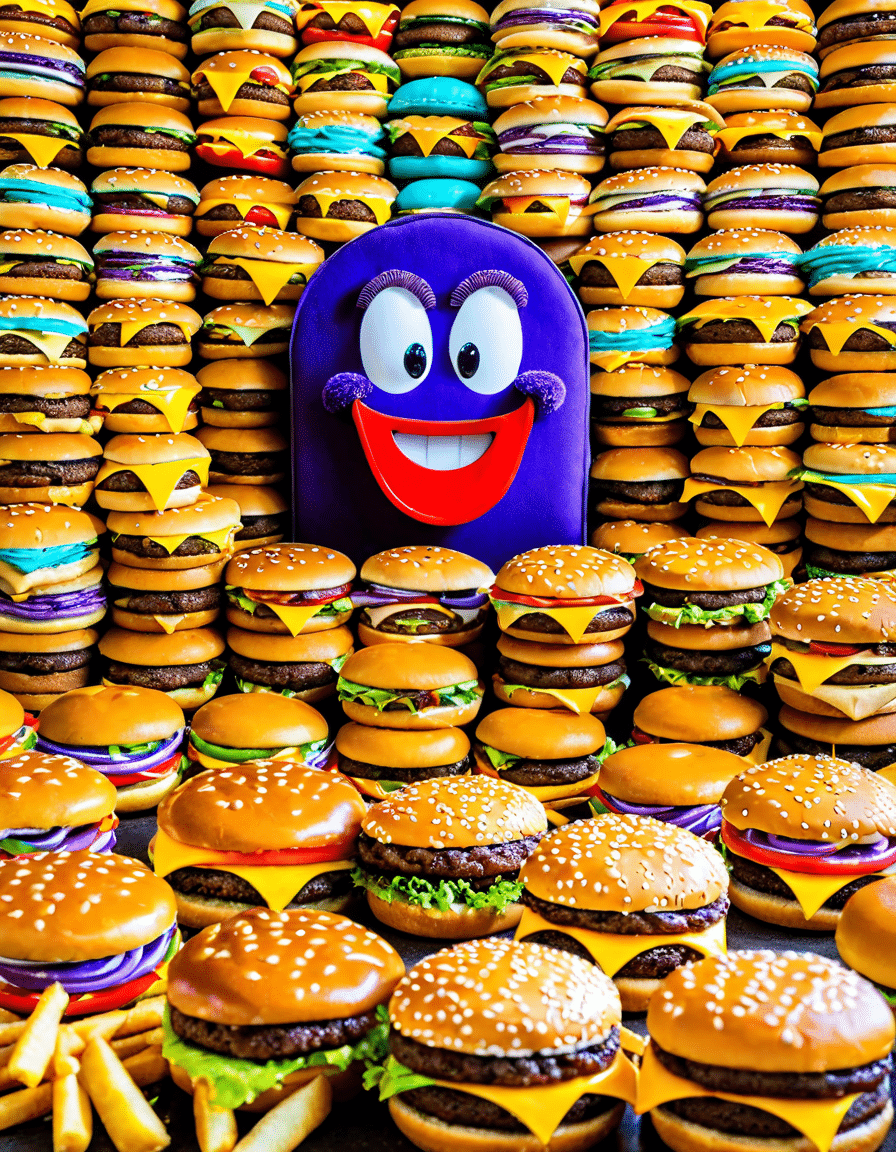
The Future of Grimace McDonald’s: Anticipating a New Era
Looking ahead, Grimace seems ready for even more adventures. Technological advancements in augmented reality (AR) and virtual reality (VR) are ripe for exploration. Imagine taking a stroll through a virtual McDonald’s with Grimace as your goofy guide, offering promotions and experiences that blend play with dining. Brands like Nike are already dabbling in these innovative approaches, setting the stage for the fast-food giant to follow suit.
As we step into 2026, there’s no telling how far the Grimace phenomenon could extend. The character could easily become a highlight in digital marketing endeavors, engrossing younger audiences through interactive games or social media campaigns. This evolution will help Grimace stay relevant while resonating with new generations who are reshaping consumer interactions.
The Lasting Legacy of Grimace McDonald’s
Grimace McDonald’s stands as a poignant example of character-driven branding. His journey—from a villain to a beloved companion—underscores the potency of evolving narratives in establishing connections with consumers. By engaging with nostalgia, leveraging effective merchandising, and embracing community values, Grimace has firmly rooted himself in pop culture.
In the ever-evolving landscape of brand identity, the future appears bright for Grimace. As technology continues to advance and social interactions become more dynamic, it will be exciting to witness how his character adapts. Make no mistake: Grimace isn’t just a fast-food mascot; he symbolizes the memories and experiences that keep generations connected to the McDonald’s brand. So next time you savor a Big Mac or sip on a milkshake, give a nod to Grimace—a true fast-food icon.
Grimace McDonald’s: The Unforgettable Fast Food Icon
A Colorful Origin Story
Grimace McDonald’s has become a beloved figure, but did you know that he was initially introduced as an antagonist? He first appeared in the early 1970s as the “Evil Grimace,” who stole milkshakes and sodas from kids. Talk about a bold move! However, he eventually morphed into the lovable purple giant we all know today. Interestingly, much like the transformation of a character in a Stephen King novel, Grimace’s evolution from villain to friend captured hearts and became a nostalgic symbol for many.
As McDonald’s brand mascot gained popularity, it became obvious that Grimace was much more than just a marketing gimmick. He became a cultural icon, showcasing the playful side of fast food dining. Just as a film star would, like Debra Winger, he’s been featured in various commercials and promotions, solidifying his spot in our collective memory. And speaking of star power, Grimace’s goofy demeanor reminds us of talented actors like Anne Marie johnson, who know how to embrace a character fully.
The Fan Frenzy
Fast forward to the social media age, Grimace has made a massive comeback, creating viral moments that resonate with fans old and new. There’s a certain charm in seeing a character that’s marched alongside the likes of the cast Of Yellowstone getting a day in the hashtag spotlight. It captures the whimsy that defines fast food culture and holds a mirror to our own nostalgia. For a quick laugh, you might even find some fans comparing Grimace to the mythical Rougarou of folklore, blending childhood memories with local legends!
Take those fun Miu Miu glasses, for example—just like how fashion makes nostalgic moments pop back into relevance, Grimace’s presence brings back the joy of simpler times. And let’s not forget the countless memes that feature him in bizarre scenarios, reminiscent of a dinner in Spanish that has gone hilariously awry. Grimace’s popularity also sparks debate about his actual character, provoking questions like “What does he eat when he’s not hanging out with Ronald? Just imagine a fast-food-themed dinner party with him as the guest of honor!
A Lasting Legacy
Ultimately, Grimace McDonald’s isn’t just a mascot; he’s a testament to the power of nostalgia and the enduring love for quirky characters. From those who still sport their purple attire a la Lori Mccommass to those reminiscing about childhood visits to the Golden Arches, he represents a slice of fast-food history that’s cherished by many. Fans can’t help but draw connections to the narratives shaped by icons like Deborah Elizabeth sawyer, who’ve captivated audiences with their uniqueness. Grimace reminds us that even in the hustle of daily life, taking a moment to appreciate a friendly purple blob can spark a bit of joy.
